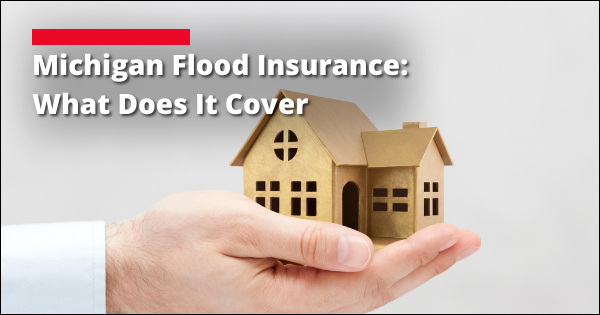Michigan experiences frequent flooding due to its unique geography and weather patterns. Heavy rainfalls in the spring, snow melts in the winter, and the state’s location near the Great Lakes make it vulnerable to flood damage. However, many homeowners are unaware that their standard insurance policies do not cover flood damage. This lack of coverage can leave homeowners financially devastated in the event of a flood. Because of this, it is crucial for Michigan residents to understand flood insurance coverage––and when they need it.
Flood Insurance Coverage
Typically, flood insurance covers losses caused by floodwaters, heavy rains, and burst pipes. It covers damages to your home, personal property, and your home’s foundation. However, it is essential to note the policy has different coverage limits depending on the item.
For instance, the maximum coverage for the structure of your home is $250,000, while the coverage for personal property is up to $100,000. Also, flood insurance may not cover damages caused by a sewage backup or losses due to mold or mildew. Therefore, it is essential to read the policy document carefully to understand the coverage limits.
The Difference Between Homeowners Insurance and Flood Insurance
Homeowners insurance covers damages caused by water damage such as a burst pipe or a faulty roof. However, it does not cover flood damages caused by rising water from rivers, lakes, or oceans. That’s where flood insurance comes in. Flood insurance is a separate policy that covers the cost of repairing or replacing items that are damaged by floods.
Homeownership in Flood Hazard Areas
Michigan has several flood hazard areas, and if you live in these areas, you may be required to purchase flood insurance. If you have a mortgage on your home and live in a high-risk flood area, your lender will likely require you to purchase flood insurance.
However, even if you do not live in a high-risk flood area, you can still experience floods. Some homeowners consider purchasing flood insurance to protect their home and personal property. It is important to note that flood insurance policies have a thirty-day waiting period before coverage starts. Make sure to purchase the policy well in advance of any potential flooding.
Risk Mitigation Tips
Flood insurance can be a lifesaver in case of a flood. However, you can also take some steps to mitigate the risk of flood damage to your home. Here are some tips:
- Raise Electrical System Components and Major Appliances – If you live in a flood-prone area, consider raising electrical switches, sockets, circuit breakers, and wiring above your home’s potential flood level. Also, consider elevating major appliances, such as your furnace or hot water heater, to a higher floor or platform.
- Install Flood Vents – Flood vents are openings in your home’s foundation that allow water to flow in and out during a flood. These vents help to reduce the pressure on your home’s foundation, reducing the risk of structural damage.
- Seal Basement Walls – Sealing basement walls with waterproof coatings can help prevent water from seeping in through cracks and gaps.
Depending on where you live in Michigan, flood insurance can be essential for your home. If you choose to forgo flood insurance, we recommend homeowners still take the steps necessary to mitigate flood damage risks.
Have further questions about flood insurance? Contact one of our experts at Hammer Restoration.

